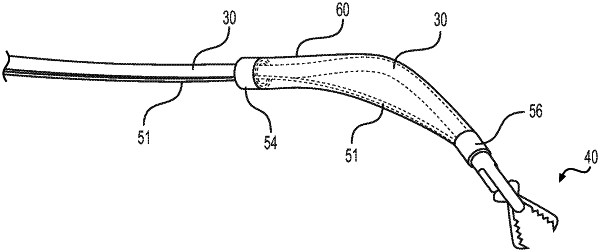| CPC A61B 17/00234 (2013.01) [A61B 1/00133 (2013.01); A61B 1/018 (2013.01); A61B 2017/00323 (2013.01); A61B 2017/00336 (2013.01); A61B 2017/0034 (2013.01); A61M 25/0136 (2013.01); A61M 2025/015 (2013.01)] | 20 Claims |

|
1. An accessory device for use with a medical device, the accessory device, comprising:
a first cuff configured to be releasably secured to a distal end of the medical device;
a second cuff configured to be releasably secured to the medical device proximal of the first cuff;
an actuator;
at least one actuation wire extending from the first cuff, through the second cuff, to the actuator; and
a membrane surrounding a portion of the medical device, wherein the membrane extends between the first cuff and the second cuff,
wherein each of the first cuff and the second cuff includes an outer member and an inner member, and wherein the outer member includes two portions connected by a hinge so that the two portions move relative to the inner member.
|